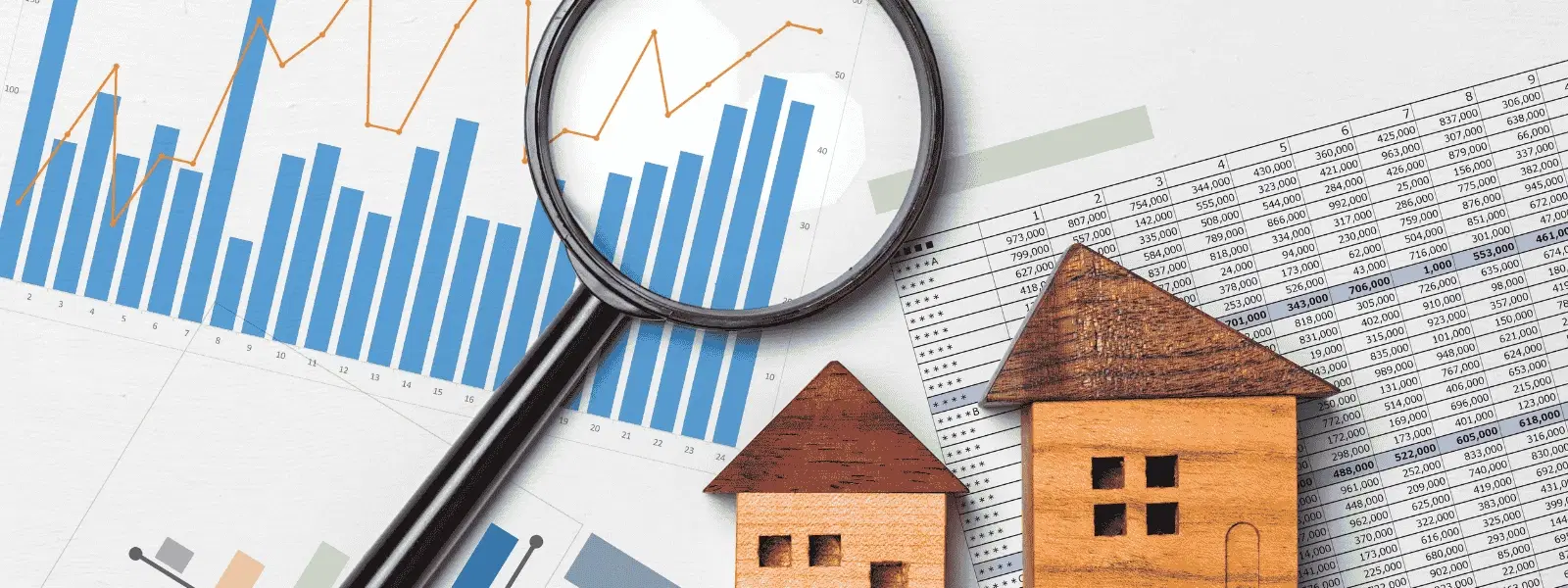
Loans
•04 min read
-1e18e07d-89f4-4e70-9a99-1bf8d854b9d8.png&w=3840&q=75)
Imagine being on the brink of buying your dream home and wondering exactly how much finance you can access. This is where understanding the Loan-to-Value (LTV) ratio becomes a game changer. LTV is crucial when planning for your home loan, as it directly influences loan eligibility, interest rates, and your overall financial strategy. In this blog post, you'll discover what LTV in home loans means, how it is calculated, and why it should be a key consideration in your home loan journey. Avail up to 500 NeuCoins on loan disbursal with Tata NeuMoney.
The LTV ratio is the percentage of the property's value that you finance through a loan. In simple terms, it is calculated by dividing the loan amount by the appraised value of the property and then multiplying by 100. The LTV ratio formula is:
LTV Ratio = (Loan Amount / Property Value) × 100
Lenders view the LTV ratio as an important measure of risk. A lower ratio often means the borrower has more equity in the property, which can lead to better interest rates and loan terms. Conversely, a higher LTV may result in stricter borrowing conditions because it indicates a larger amount of finance is being taken relative to the property’s value.
In India, regulatory guidelines set by the RBI establish the maximum permissible LTV ratios for housing loans. As per RBI norms, maximum LTV ratios for home loans typically range between 80% to 90% depending on property type and loan amount. This framework ensures that both lenders and borrowers have a safeguarded approach to home financing. Understanding these guidelines can help you make informed decisions while planning your finances.
Calculating the LTV ratio is straightforward. For example, if a property is valued at approximately ₹1 crore and you plan to secure a loan of up to ₹70 lakh, the LTV ratio is determined as follows:
(₹70,00,000 / ₹1,00,00,000) × 100 = 70%
Several factors can influence your LTV ratio. The size of your down payment, the accuracy of the property’s appraisal, and the total loan amount all play pivotal roles. Ensuring that the property is accurately valued is key to obtaining a fair LTV calculation.
Online LTV calculators are valuable tools that simplify the process of determining your LTV ratio. These calculators allow you to input the property value and the loan amount to quickly compute the LTV. They are especially useful when planning finances, as you can experiment with different scenarios to see how varying down payments could affect your eligible loan amount.

Lenders use LTV ratios as a benchmark to assess your eligibility for a home loan. A lower LTV implies that you have substantial equity, which can improve your chances of getting approved for a loan. In contrast, a high LTV may limit your options, as it signifies a higher risk for the lender.
The LTV ratio also affects the interest rates offered on your loan. Banks and housing finance companies tend to charge higher rates for loans with high LTV ratios to compensate for the increased lending risk, whereas lower LTV ratios can help in securing more favourable loan terms.
From the lender’s perspective, a well-calculated LTV ratio acts as a buffer against potential property value depreciation. For borrowers, understanding the LTV can be a strategic tool to manage your financial risk and avoid over-leveraging your investment. This clear insight allows you to better plan repayments while considering future market fluctuations.
A high LTV ratio can enable you to secure a larger loan amount with a minimal upfront payment. This arrangement is particularly useful if you have limited liquidity but are keen to own a property without tying up a significant portion of your funds.
However, the flip side is that higher LTV ratios typically come with higher interest rates and stricter loan conditions. This means a larger financial risk should the property’s value decline unexpectedly.
Maintaining a low LTV ratio often paves the way for better loan terms, including lower interest rates. Additionally, having more equity in your property offers a more secure financial foundation, reducing overall risk.
The primary challenge with a low LTV ratio is the need for a larger down payment. This upfront outlay can be demanding on your liquidity, especially when combined with other financial commitments.

You can improve your LTV ratio by increasing your down payment, which in turn lowers your loan amount relative to the property value. Maintaining a healthy credit score also plays a big part in qualifying for loans with a more attractive LTV. Additionally, opting for properties in stable or appreciating areas can secure your investment against market volatility.
Being informed about your LTV can give you an edge when discussing terms with lenders. Knowing the lender-specific LTV policies allows you to negotiate better interest rates and more flexible loan conditions. Experience a seamless, 100% digital loan process with Tata NeuMoney. Remember that a well-prepared application backed by a favourable LTV can enhance your credibility in the eyes of lenders.
The landscape of home finance is ever-evolving. Technological advances are streamlining the way LTV calculations are performed and loans are processed. Furthermore, potential adjustments in RBI guidelines may influence maximum LTV ratios in the coming years. Keeping an eye on these trends can help you adapt your financial planning accordingly.
LTV in home loans refers to the percentage of the property’s value that is financed, based on specific guidelines provided by the institution.
For instance, if you purchase a property valued at ₹50 lakh and secure a loan of up to ₹40 lakh, your LTV ratio would be (₹40,00,000 / ₹50,00,000) × 100 = 80%.
An LTV calculator is a tool that automatically computes your LTV ratio by inputting the loan amount and the property value.
According to RBI guidelines, the maximum LTV ratio for home loans in India generally falls within a specific range based on your loan amount and property type.
A higher LTV ratio usually entails higher interest rates due to an increased risk, whereas a lower LTV ratio may fetch more beneficial loan terms.
Understanding the LTV ratio is crucial for making well-informed home loan decisions. By learning how to calculate and interpret LTV, you can better gauge your eligibility for a loan, negotiate favourable interest rates, and manage financial risks effectively. An accurate LTV assessment allows you to plan your finances more wisely, ensuring that your investment in a property is both secure and sustainable.